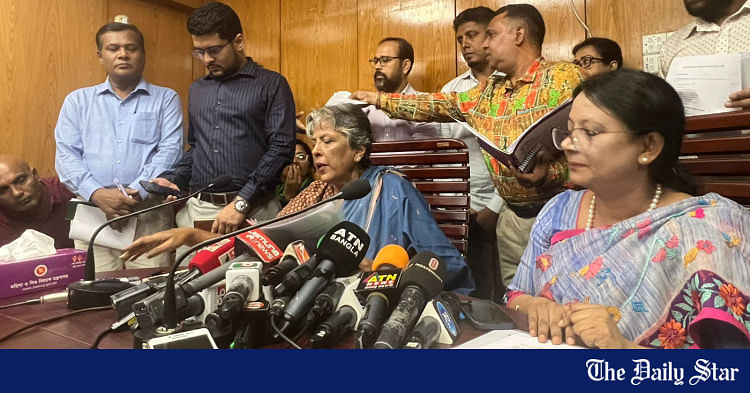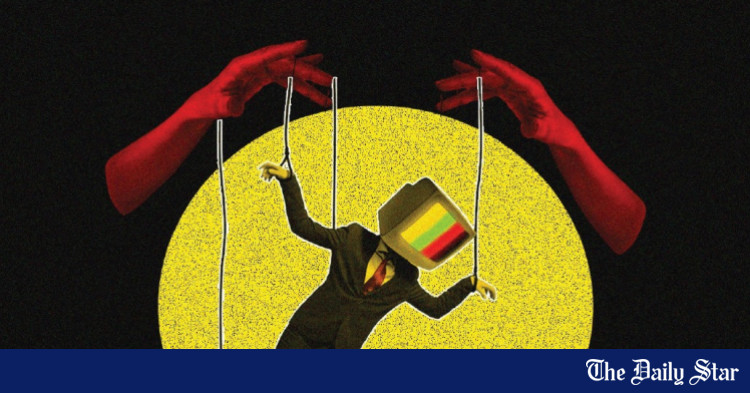- Copy to clipboard
- Thread starter
- #31

105 children killed in July uprising
At least 105 children were killed during the recent student-led uprising in July and August, Women and Children Affairs Adviser Sharmin S Murshid said yesterday.
105 children killed in July uprising
Govt publishes draft list of 737 killed

Photo: UNB
At least 105 children were killed during the recent student-led uprising in July and August, Women and Children Affairs Adviser Sharmin S Murshid said yesterday.
Each victim's family will receive Tk 50,000 as compensation, Sharmin, also the social welfare adviser, announced during a press conference at the secretariat.
The list was finalised by the Health Services Division under the Ministry of Health and Family Welfare, reports UNB.
The monetary grant and a certificate will be distributed on World Children's Day today among families of the deceased children.
The ceremony is scheduled to take place at the Osmani Memorial Auditorium.
Additionally, Murshid noted that Tk 82,70,898 has been allocated to assist students injured during the Anti-Discrimination Student Movement through the Social Service Office and the Upazila Patient Welfare Association.
The ministry is also in the process of securing $5 million from the World Bank to fund rehabilitation and treatment for those affected by the uprising.
She also said the Ministry of Women and Child Affairs currently operates 12 daycare centres and is advocating for the establishment of daycare facilities in all government institutions by June 2026.
The government is also exploring the possibility of introducing private-sector daycares to enhance employment opportunities and provide essential services.
Meanwhile, the interim government yesterday published a preliminary list of at least 737 people who died during the student-led mass protests in July and August.
The names and identities of the dead were collected from different public and private hospitals, reports our staff correspondent.
The list is available at ছাত্র জনতার গণ অভ্যুত্থানে নিহত ও আহত ব্যক্তিবর্গের তালিকা.
Being a preliminary list, it's a work in progress and is being updated. The website's filtering function was not working accurately as of last night. However, initial analysis indicates that the majority of fatalities occurred in Dhaka, and most of the victims were students.
Earlier on September 24, the government published a draft list of 708 names on the website of the Health Services Division under the Ministry of Health and Family Welfare.
The draft list was scrutinised again and the preliminary list was released yesterday.
Govt publishes draft list of 737 killed
Photo: UNB
At least 105 children were killed during the recent student-led uprising in July and August, Women and Children Affairs Adviser Sharmin S Murshid said yesterday.
Each victim's family will receive Tk 50,000 as compensation, Sharmin, also the social welfare adviser, announced during a press conference at the secretariat.
The list was finalised by the Health Services Division under the Ministry of Health and Family Welfare, reports UNB.
The monetary grant and a certificate will be distributed on World Children's Day today among families of the deceased children.
The ceremony is scheduled to take place at the Osmani Memorial Auditorium.
Additionally, Murshid noted that Tk 82,70,898 has been allocated to assist students injured during the Anti-Discrimination Student Movement through the Social Service Office and the Upazila Patient Welfare Association.
The ministry is also in the process of securing $5 million from the World Bank to fund rehabilitation and treatment for those affected by the uprising.
She also said the Ministry of Women and Child Affairs currently operates 12 daycare centres and is advocating for the establishment of daycare facilities in all government institutions by June 2026.
The government is also exploring the possibility of introducing private-sector daycares to enhance employment opportunities and provide essential services.
Meanwhile, the interim government yesterday published a preliminary list of at least 737 people who died during the student-led mass protests in July and August.
The names and identities of the dead were collected from different public and private hospitals, reports our staff correspondent.
The list is available at ছাত্র জনতার গণ অভ্যুত্থানে নিহত ও আহত ব্যক্তিবর্গের তালিকা.
Being a preliminary list, it's a work in progress and is being updated. The website's filtering function was not working accurately as of last night. However, initial analysis indicates that the majority of fatalities occurred in Dhaka, and most of the victims were students.
Earlier on September 24, the government published a draft list of 708 names on the website of the Health Services Division under the Ministry of Health and Family Welfare.
The draft list was scrutinised again and the preliminary list was released yesterday.











